On March 19th, 2010, Canon released the updated version of their famed workhorse, the EF 70-200mm F2.8L IS II USM lens. I have spent the last three days taking mine through its paces, and today I’m going to share my findings.
[smart_track_player url=”https://www.podtrac.com/pts/redirect.mp3/traffic.libsyn.com/mbppodcast/mbpp_ep235″ src=”https://app.fusebox.fm/embed/player.js” class=”mbp-ignore”>
I’ve been waiting for this update to the 70-200mm F2.8L IS lens for over two years. It was my workhorse lens since I bought my version one copy in 2006, and I was very happy with my results from it when I was using a 5D as my main camera. As soon as I upgraded to the 1Ds Mark III and then also shooting with the 5D Mark II, it became obvious that this camera was not resolving images quite enough to produce sharp shots when used wide open at F2.8 on these 21 megapixel cameras.
To compound the problem, at about the same time as I bought the 1Ds Mark III, I also bought a 300mm F2.8 L lens, which is as sharp as tacks, even when used wide open at F2.8. This is not an apples to apples comparison of course, as it is rare that a zoom lens will be as sharp as a prime lens, and the 300mm F2.8 is an exceptionally sharp prime lens. Still though, the timing of the purchase certainly affected how I felt about my old 70-200mm, and I found myself reaching for this lens less and less over the two years or so that followed.
Although I would usually part exchange my old lens when I buy a new one like this, I decided to keep my old 70-200 until I’d run some tests, so that’s exactly what I’ve been doing for the last three days. I thought it would be great if I could not only review the new version, but also I really wanted to compare it with the old one, to see if there really was a difference. This will also help those of you that current own a version one 70-200, and want to know if it’s worth upgrading or not. The definitive answer of course is, “it depends”. What I will say at this point is if you are already happy with the results you are getting with your current lens then don’t sweat it. There’s no need to upgrade if you are getting the results you want. The following review will just give you some additional information to help you make a comparison and weigh up the benefits against the cost if you are thinking about an upgrade.
What’s in the box?
The lens comes with a nice strong case, not the usual gray pouches that most lenses come with, which is nice for when you just want to throw it over your shoulder for more casual shooting about town for example. One word of advice about the case though, is attach an old camera strap and not the centimeter wide strap that comes with it, as that thing will cut your arm off from the shoulder if you walk around with it all day.
You’ll also find the usual lens cap, rear dust cap, instructions manual, warranty card and a nice newly designed lens hood, as well as the lens itself of course. The box itself is considerable bigger than the original 70-200s box, as you can see below.
Newly Designed Lens Hood
As I said, the lens hood design has been changed, and there’s now a little button that you have to press before you can turn the lens to take it off the lens, both when it’s attached backwards for storage, or attached in the normal shooting position. This is actually a great improvement in my opinion. I found that the old lens hood turned too easily, especially after a little wear, so it could either drop off, or turn slightly while you are shooting, and because of the shape of the hood, if it turned, it could theoretically give rise to vignetting. Although this never happened to me with the old hood, I have noticed it in a rotated position in the past after walking with the lens dangling by my side, and had to straighten it up before shooting.
The new hood is also a matte finish, rather than the glossy plastic that the original hood had. The inside of the hood has a felt-like material on it, the same as the original one, but the matte plastic on the outside will make handling the hood better, compared to the glossy plastic old hood, which could be a little slippy to handle, especially with dry hands.
Wider Focusing Ring
Minor changes are that the new 70-200mm F2.8L IS II USM lens is about 2mm longer than the original, and has some smoother curves in places, and a lower profile switch panel. Externally the other obvious change and another improvement is the larger focusing ring. The new versions focusing ring is about 1.5 times wider than the original, which means you won’t have to search for the ring to manually focus while shooting. This is another one of those things that I didn’t realize was a problem until they fixed it, but I do seem to recall fumbling for this ring in the past. I manually tweak focus quite a lot, especially when shooting with LiveView, and I found it was just there for my hand when I reached for it, but I didn’t notice that the ring was bigger until I lined the two lenses up side by side to photograph them to illustrate this Podcast episode.
Internal Updates
Internally, the new version now has 1 fluorite and 5 UD elements, compared to 4 UD elements and no fluorite lenses in the old version. The 70-200mm F4 lens also has a fluorite element, and has historically been much sharper than the F2.8 lens, even at F4, so the fluorite element is a welcome addition to the new 70-200mm F2.8 lens.
Of course, the other nice changes is an additional stop of Image Stabilization. The original lens had 3 stop IS, and the new one is purported to have 4 stops of IS. This I guess and the other changes mean that the already somewhat heavy 70-200mm F2.8 lens, at 1470g is now 20g heavier in this version II incarnation, at 1490g. Either lens will start to take its toll on your arms and shoulders if used hand-held for any length of time, but once you are used to that, it’s definitely a hand-holdable lens, especially with it’s now 4 stop Image Stabilization.
Shorter Minimum Focus Distance
One other improvement that I should note that I’m very happy to see is that the new version now has a shorter minimum focus distance, which means you can get closer to your subject than you could before. Now, the specifications for this lens differ from the Japan site and the US Canon Web site. On the Japan site, and on the lens barrel itself I should note, it says that the minimum focus distance for the old version is 140cm, but on the US site, it says 1.3m or 130cm. Assuming that what it says on the lens itself if correct, the version II now gives us 20cm shorter minimal focus distance, which is actually very important when shooting flowers for example, or even portraits say, when you really want to fill the frame with the subjects face.
Auto-Focus Tests
So, I did a number of tests with charts etc. and I did a lot of real-world shooting as well, which we’ll get to later. First, let’s take a look at how the lens fairs under some relatively strict but by no means scientific tests. The first thing I did, and I advice anyone to do when you buy a new lens, is to download and print out a lens test chart and do some tests. I used Tim Jackson’s Focus Test Chart, but you can also buy something like one of the Lens Align Pro Focus Calibration products, which I think I’m going to pick up at some point. Auto-focus accuracy can vary per copy, and although Canon manufacturing and quality assurance standards are very high, occasionally a bad copy gets through the production line, and you usually only have a week or two to check if yours is OK, and still be able to return it to the shop from which you bought it. Because of this, I test all of my new lenses for this as soon as I buy them.
I’ve included a photo of the chart that I shot wide open at F2.8 for your reference, but because the lens performed exactly as I’d expect, with the focus spot on after laying the test chart on the table, then shooting it from a 45° angle, and the using the auto focus to focus on the center line, I’m not going to share the full details of the test. Basically I shot the chart at 70mm, 115mm and 200mm, and worked my way through the apertures from F2.8, F3.2, F4, F5.6, F8, F11, F16, F22 and F32. The lens focused right on the line, and the results were fine.
Resolution Tests
I did want to see how sharp the lens was, both as a stand-alone test, to see if it lives up to my expectations, and in comparison to the original 70-200mm F2.8 lens, so I also photographed an ISO 12233 Resolution Test Chart, that I downloaded from Cornell University’s Web site.
The results were very favorable for the new version of the 70-200mm lens. I created a few animated GIF files that we’ll look at below to illustrate the difference in the resolving power between the two lenses. This first animation shows a comparison of the center of the chart shot with both lenses wide open at F2.8, at 70mm, 115mm and 200mm. We can see from this that the version II lens is just so much sharper than the old version at both extremes of its focal length, and in the middle. I start with the old version of the lens, and then switch to the version II image for each focal length, and you can just see the focus snap in as I switch to the version II image each time. This is very impressive to me.
Note that these animations are 100% crops of the original RAW files, and I ran only the default sharpening that Lightroom applies to all RAW files, unless you change the settings. There’s nothing else done to these images
The next animation shows the center of the chart, shot at 115mm focal length, and I rotate through all main apertures from F2.8 right down to the smallest aperture at F32. Although lenses generally get pretty soft due to diffraction when you stop them down through F16 and smaller, I shot F22 and F32 images as well, so that we could see just how much diffraction affects this lens, and again, I was very pleased with the results. As we cycle through the apertures, the first thing that you’ll notice is that the lens is sharp wide open at F2.8, and doesn’t really change through to F11, and then starts to get very slightly softer at F16, but even at F22 is suffers very little from diffraction, and even F32 is usable if you really needed the additional depth-of-field that this smallest aperture will provide, if you can accept a slightly soft image. Note too that at F32, to my eye, the lens is still sharper than the original version of this lens at F2.8, so again, I’m very happy with these results.
So far we’ve looked at the center of the chart, which I shot obviously with the center of the lens. As you know though, most lenses are less sharp around the edges than they are in the center, so I’ve also created an animation to show the top right corner of both lenses at F2.8. We can see that the old version of this lens is a mess at the edges at F2.8. (Note here though that the results are slightly skewed, because I was shooting up at the target by a centimeter or so. It was the only place on my wall that I could stick the target!) The results do get slightly better as you stop the lens down of course, but as I like to use lenses wide open, to capture scenes with flowers for example over at the edges, this has been a real pain for me with this lens. Because the chart, even printed out on 13×19″ paper, didn’t fill the frame at 70mm, this animation only shows the corners when shot at 115mm and 200mm. You can see here that even the version II is much softer in the top corner when used wide open that it is in the center, but within acceptable limits in my option. We can also see that it performs better at 200mm than it does at 115mm.
Real-World Examples
These tests are all well and good, but I know you also want to see how the lens fairs in the field. Again, I like to shoot the lens wide open, and as that’s usually the weakest aperture for most lenses, especially zoom lenses, I shot many of these examples wide open at F2.8. This first example photo, of a field of oilseed rape flowers, has the main subject along the right third, with the flower head close to the top of the frame.
I’m only going to include the 70-200mm F2.8 version II image here, as at the Web size, you really can’t see the difference between this and the version I image. But here are two 100% crops, first of from the Version I lens, and then from the version II lens.
You can see that the Version II lens has produced a much sharper image, even though the subject that I cropped out here is close to the edge of the lens, albeit not the very corner. Note that if you want to get a very quick comparison without scrolling, you can click the thumbnails at the bottom of this post, and navigate back and forth by clicking on the left and right side of the images.
I should note too that the original lens, although certainly softer, has produced a very nice image. If you are happy with that amount of sharpness, then you certainly won’t need to run out and buy the updated version. Let’s continue to look at some examples though, before you fully make up your mind.
I know that many people also use this lens as a portrait lens, so I paid a visit to my friendly Barber again, and asked him to pose for a few shots, again using both lenses for comparison.
Below again are two 100% crops of images from both the old and new version of this lens for comparison.
Again, very acceptable sharpness, but here’s a 100% crop from the version II lens.
So again, although the old version has produced a nice image, even wide open, the new version is sharper. I should also note here that if you think I’m being cruel by showing you a 100% crop of my barbers wrinkles, note that he’s over sixty years old. My eyes are more wrinkled than this and I’m 20 years younger than him!
Next I made a trip to a local temple called Daienji, and tried out the new four stop Image Stabilization. I have to say that I was not totally impressed with this. Not unimpressed with the IS in general, but I did not get great results as often as I’d hoped. I did get some usable shots though, and have in fact uploaded these last few images to my online gallery, so you can jump to them with their number that I’ll call out as I usually do as we look at these last few real-world example images.
First up is image number 2517, of some Jizou statues at the temple. I shot wide open at F2.8, and focused on the nearest eye, as I would a portrait shot. I noticed the lens searched quite a lot here, but it was very dark. The sun had already very low in the sky, and behind buildings. The temple grounds are walled in too, so there was little available light. I found though that the lens search less when I zoomed in, and got rid of some lighter patches in the background. It didn’t feel great, but this only happened with this subject, so I’m not going to panic about this just yet. I’ll update you later though if I see more of this searching. Let’s also bear in mind that this exposure required 1/30th of a second at ISO 200, so you can appreciate that there was not a lot of light.
In the next image, number 2519, I was shooting at 125mm which means if you use the rule of thumb of using the focal length as the minimum shutter speed, i.e. 1/125th of a second, we can calculate that four stops below that is 1/6th of a second with ISO 100.
Here I was testing that the new four stop Image Stabilization was as good as I’d hoped. I was kneeling in a similar position to my MBP Kneeling Man logo, but cranked over to one side a little to avoid an obstacle, so it wasn’t the most stable pose to shoot from, but I ended up shooting around 20 frames of this subject, and only about three were sharp. The others ranged from slightly soft to totally blurry.
I’d focused between the eye and the nose, to get some definition in the shape of the nose, and get the inside of the eye sharp, kind of juggling priorities to still get an overall well focused image, without increasing my depth-of-field. I use all sorts of tricks to keep my lenses wide open. 🙂
I actually uploaded six images shot with the new version II 70-200mm at this temple to Flickr and my Web site, but I’ll skip them here for the sake of time. I will put a link into the show-note though that will list all images shot with this lens in my online gallery, if you want to take a look.
As I was walking out of the Showa Memorial Park on Saturday afternoon, the sun was low in the sky, and there were lots of people still on the boating lake, and I shot one last image that I’d like to leave you with today, and that is number 2516 (right).
I shot this with an aperture of F11, and a shutter speed of 1/6400 of a second, because the sun was very bright reflecting off the water. I didn’t mind this as I didn’t particularly need a shallow depth-of-field here, and I didn’t really want to take the time to fit an ND filter, as there were a lot of people on the lake, and chances like this, with just one boat in the frame were not going to come along so often. I really like this image though, with the well-defined silhouette figures of the young couple enjoying a later afternoon row on the lake. There’s even a little bonus duck paddling along the top of the frame.
I just wanted to share this with you as a last example of the quality of this lens though, especially as I haven’t shown you any real-world examples with the lens stopped down below F2.8 yet.
Here though is a 100% crop (below) of the young woman and half of the guy in the boat. I’m sure you’ll agree that the sharpness of these silhouettes is incredible. Also, the way the lens handled the specular highlights is pretty impressive too. There’s nowhere that these highlights are overly bleeding into the silhouette of the couple. At least when I zoomed in to look at this one, I had one of those hair-standing-up-on-the-back-of-my-head moments.
So there you have my initial thoughts about the new EF 70-200F2.8L IS II USM Lens from Canon. if you currently own a version one lens and are using it with a high-resolution camera like the 5D Mark II or 1Ds Mark III, and if you are happy with your results, then you have nothing to worry about. I personally think the upgrade is worth it to get images this sharp wide-open. Even stopped down, the version is not as sharp as the new version, because it is simply out-resolved by the 21-megapixel sensors. As I say though, if you are happy with your current results, don’t sweat it.
I though am very pleased that I now have my workhorse 70-200 F2.8 lens back. Wild-horses couldn’t have kept me from digging deep for this one, and now that I’ve tested it out, I’m very pleased that I took the plunge.
NOTE: The week after this Podcast/Blog post, I did a follow up review, having tested the Version II F2.8 lens with the 1.4X and 2X Extenders (teleconverters). You can read and listen to the follow up review here:
Podcast show-notes:
Tim Jackson’s Focus Test Chart: http://focustestchart.com/chart.html
Cornell University’s Resolution Test Chart: https://mbp.ac/lenstestchart
Music from Music Alley: http://www.musicalley.com/
Audio
Download the Enhanced Podcast M4A files directly.

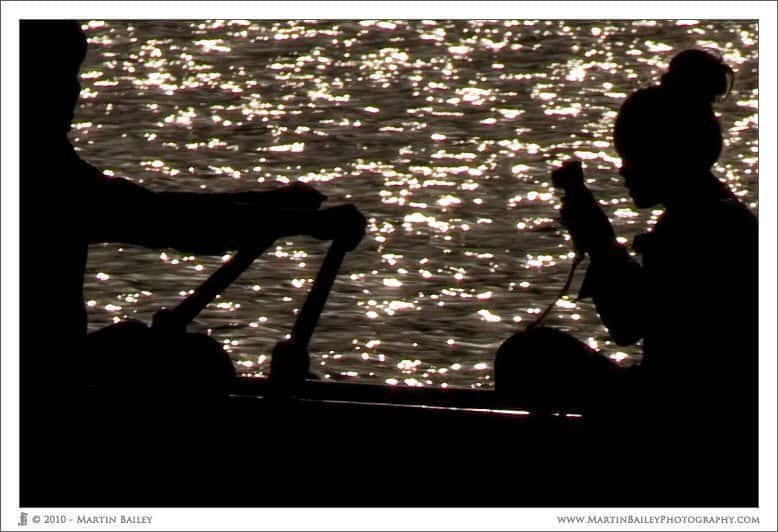

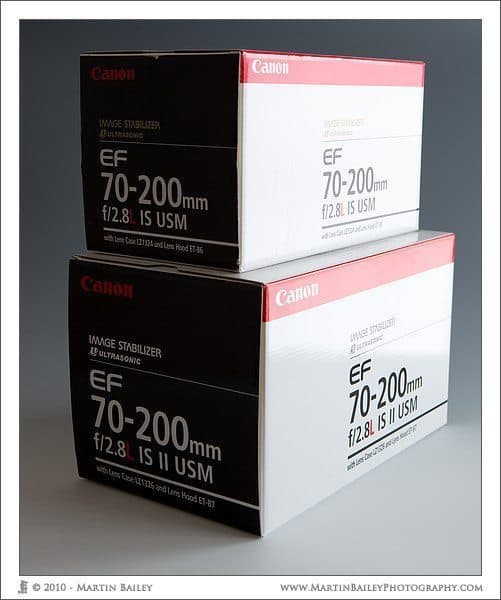
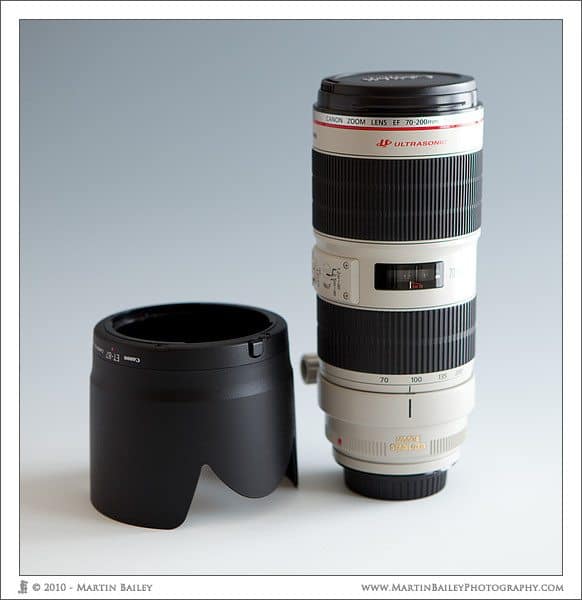
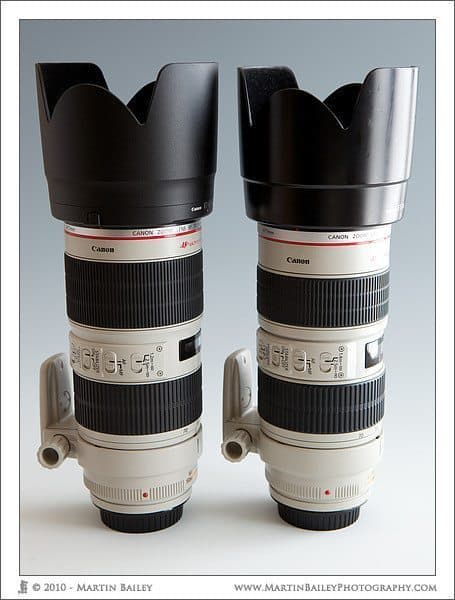
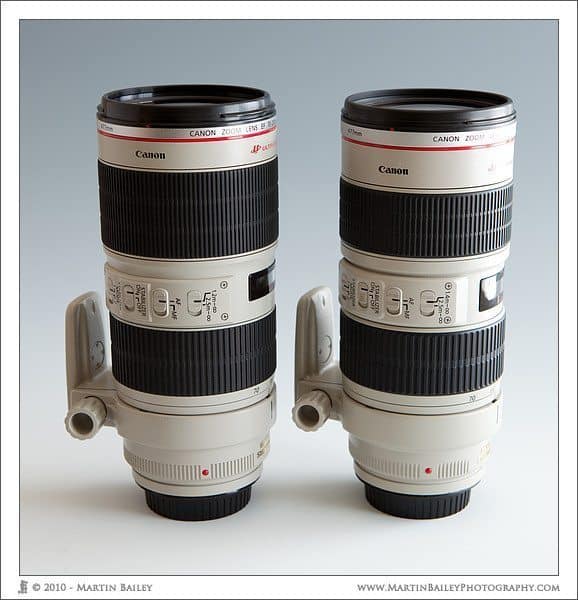
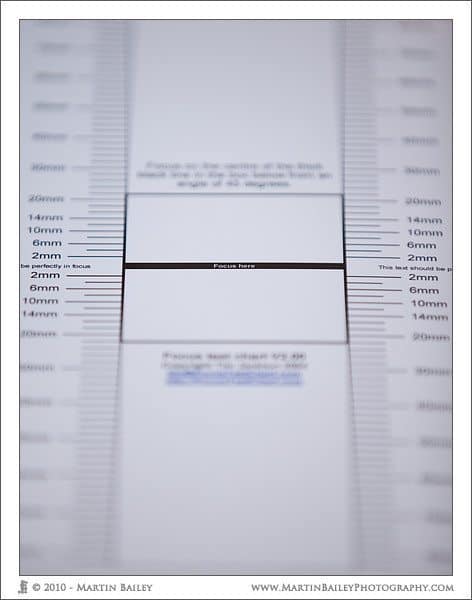

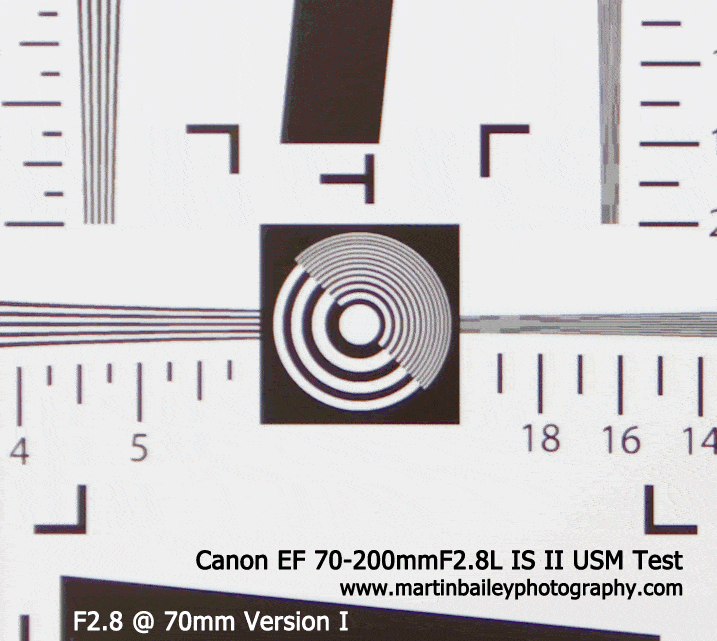
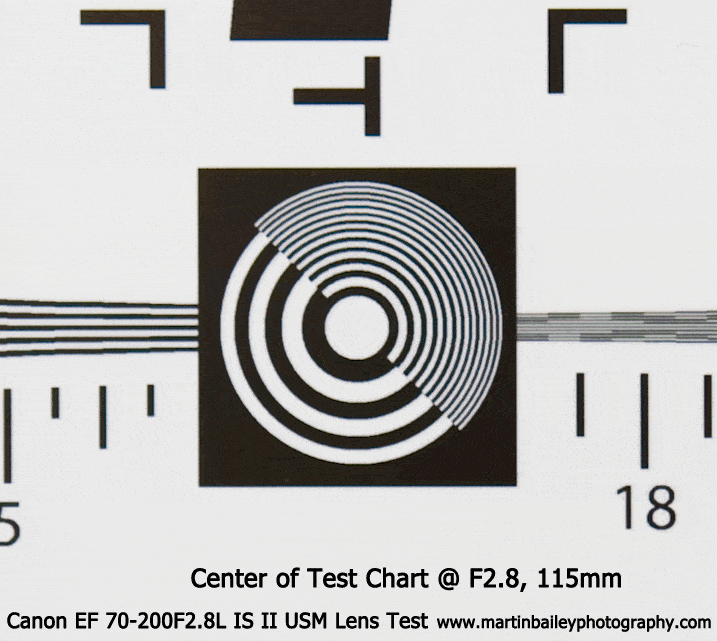
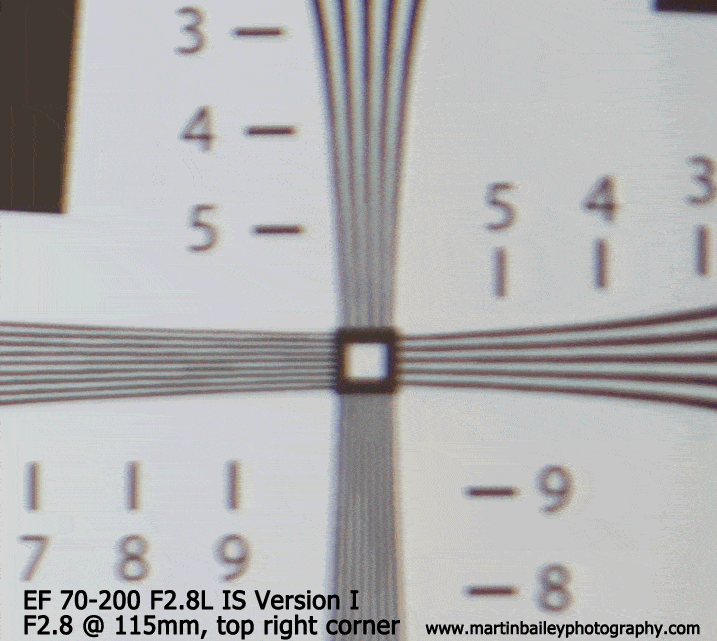
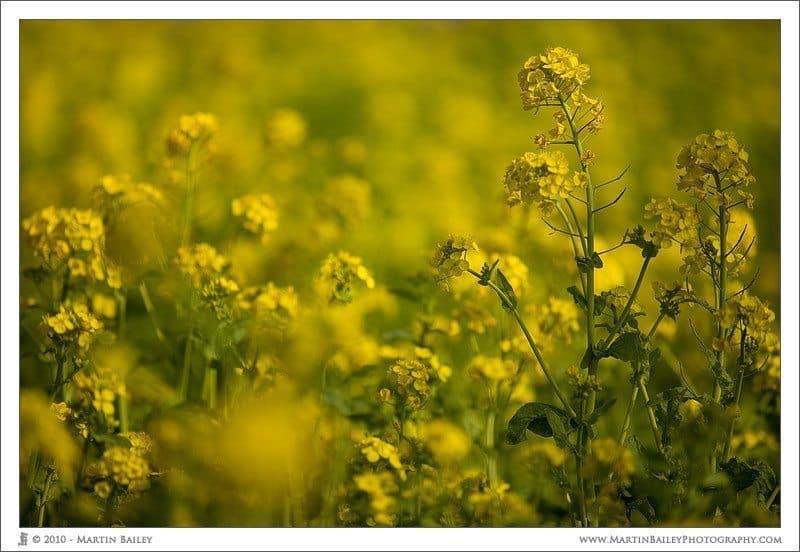
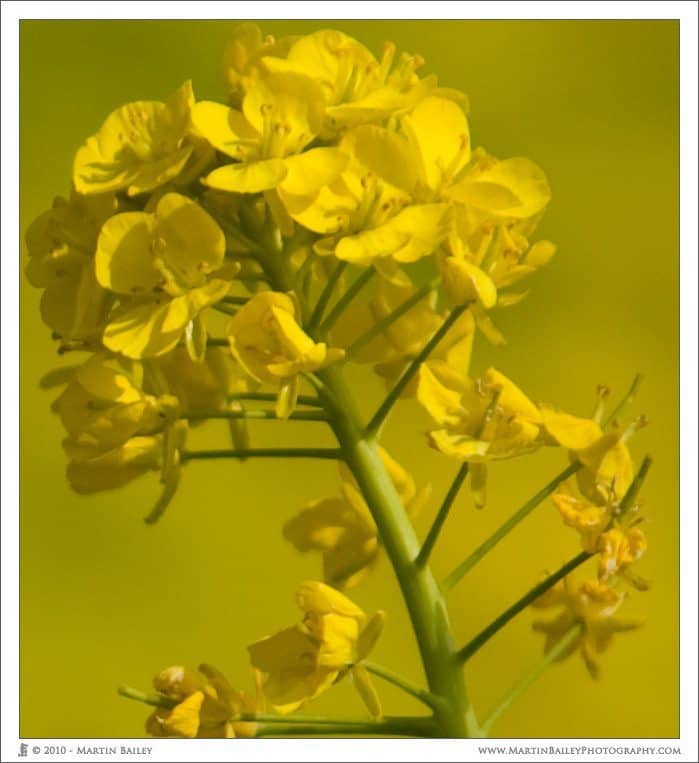
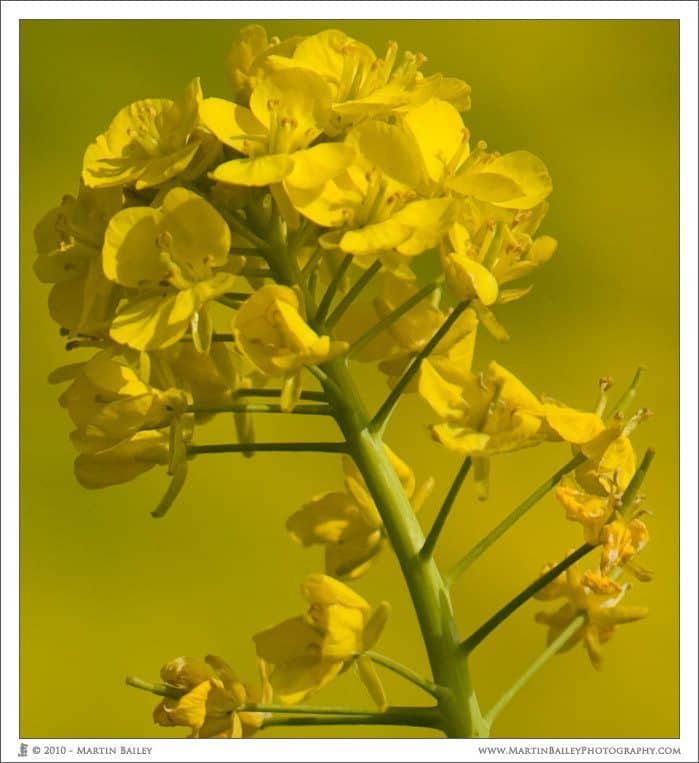
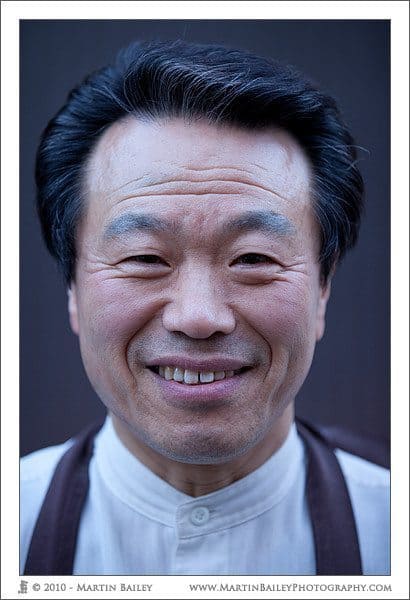
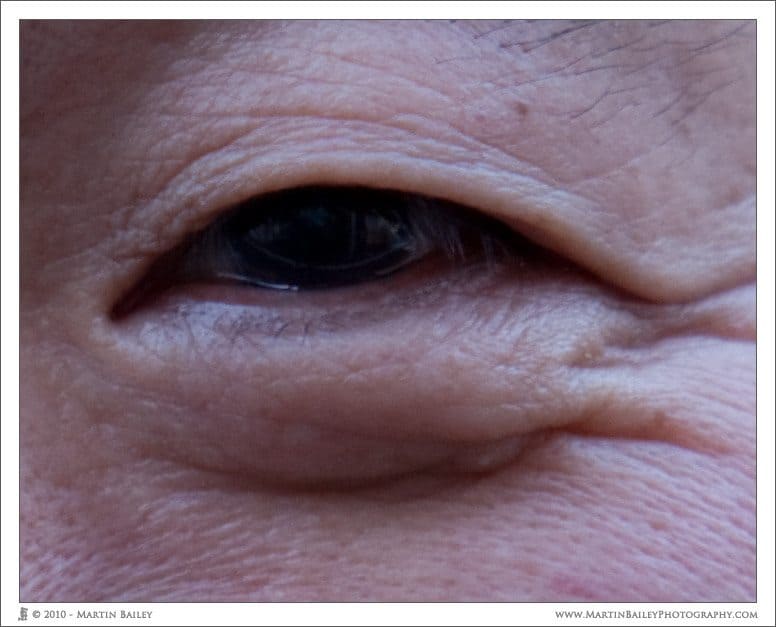

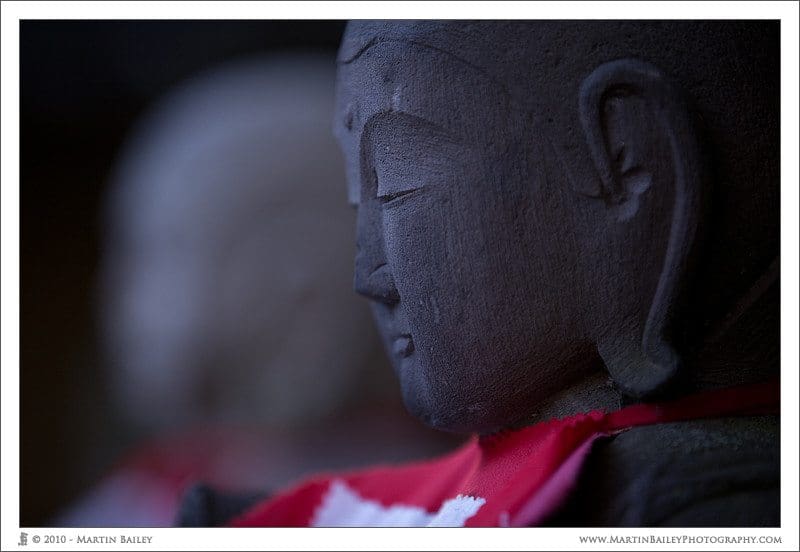
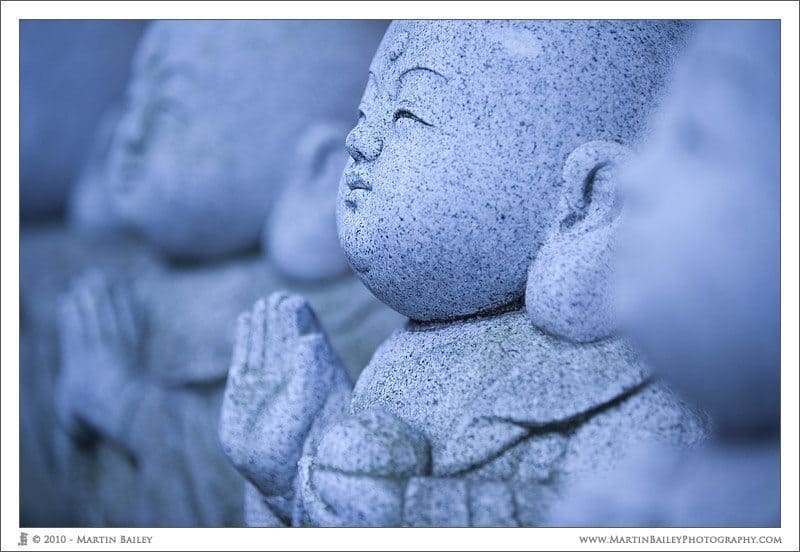
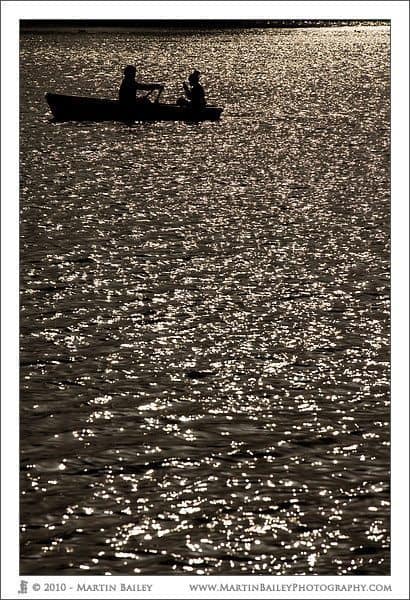

Have you tried this lens with the Canon teleconverters? I am looking for an alternative to my 100-400 and would be very interested in your experience as both approach 400mm. Great podcast and now great blog! Thanks very much.
Good question Koop!
I haven’t tried it yet, but I will do very soon. I also sold my 100-400 after getting the original 70-200mm F2.8, as it worked reasonably well with the 1.4X Extender. Both became too soft though as I started to use it with the 21MP cameras.
I do hope the 70-200mm F2.8L II works well with the Extender, as that does make it much more versatile. I’ll check it out soon and report back.
Thanks for the kind words about the Podcast and blog! 🙂
Martin.
After I got my 5DII, the choice of lenses was not easy. Beside my 100mm macro I had a gap between 35mm and 300mm. I was looking as some options but I think your review help me find the missing link.
Thank you very much for your podcast.
Thanks for the review, listened to it this morning while at the gym. Not only did I learn how to test a lens from this review, I learned that the f/4 I version of the lens has a fluorite element while the f/2.8 I doesn’t. Thank you again for your generosity in sharing.
Koop, in case you didn’t see this, I did the Extender tests, and released a follow up Podcast/Blog post, based on your suggestion. Thanks!
https://martinbaileyphotography.com/2010/03/29/podcast-236-the-ef-70-200mm-f2-8l-is-ii-usm-lens-with-extenders/
Eric, I’m please that this review has helped. This lens sure has met and beaten my expectations. Even more so now that I know I can use my Extenders with it again!
Nancy, you’re welcome. Your F4 version is one sharp fellow (or fellowette!) and that fluorite lens element is the main reason. I’m really pleased they dropped one into the Version II F2.8 as well!
Martin,
Have you noticed any vignetting problems with the new lens? I picked one up just before a trip to Death Valley and was surprised by the amount of vignetting I experienced. It’s easily correctable in Lightroom, but it was far more than I ever saw on the previous version.
Neil
Hi Neil,
I haven’t noticed any vignetting “problems” as such, and certainly no more than the previous version of this lens. Sure, there is a slight darkening of the corners when you shoot wide open, if you compare to a shot that is stopped down some, but I can only see this when I’m cycling through shots like the tests I did for this review, and it certainly isn’t to problem levels.
Take a look at the oilseed rape shot above for example. You can see that there is possibly some darkening, in the top right and left corners, but this is about the same as most lenses when shooting wide open, and to be honest, I never correct this in post. I like the corners to be a tad darker, as it keeps the user “in” the image.
I might be weird, but I actually add vignette to some shots for this same reason. 🙂
If you are seeing considerably more vignetting than you can see images above (except the 100% crops of course) then you might want to take your copy of the lens back to have it checked.
Let us know how you get on too. I’d be interested to hear if you have a bad copy.
Cheers,
Martin.
Great job Martin I enjoied your review of the canon EF 70-200mm F2.8L IS II USM Lens. I have the same problem with my old Nikkor 180mm in sharp shots when I use wide open F 2.8.
Excellent review! Thanks so much for taking the time to write it.
Whew!!! Thank you Martin. I am really surprised of the huge difference in terms of resolution. I am rather disappointed that apparently Canon has been holding back that much on building us the best product for our money. I am saying that because all the theory of optics and manufacturing technology have been with us if not from the end of WWII, at least for the last 10 years. Other lens maker like Leica or old C Zeiss have been known to have overbuild their system to perfection. And after all, we are talking about comparing the same professional series L lens.
The way you compare it via this animation is a very nice touch.
Which start me thinking that I should seriously consider that carl zeiss 50mm on 5dm2 or even some older camera lens originally designed for film… Am I wrong again?
Thank you Martin – fantastic review that has made me want one! However, do you find that the weight is heavy for ladies? I’m in two minds whether to go for this new version f/2.8 L II or buy the f/4 70-200. As it will be used for such varied photography including low light I know the recommendation would be to go for f/2.8. BUT….. as I stated above would the weight be an issue as I would have to carry it around for a number of hours, using it on a 1Ds MkIII. Do you know any ladies who do and don’t have an issue with this!
Thanks for the comments everyone!
Arthur,
This is about what I was expecting, or at least hoping for. 🙂
I wouldn’t say Canon have been holding back that much. The technology hasn’t really been there that long. They know use computers to map how the light will travel through each lens element then all of them as a group, and it’s much easier now to create quality lenses than it was say just 10 years ago, probably even less.
The other thing to bear in mind is that when these original lenses were designed, they only needed to resolve enough detail for a good quality 35mm film image. Now the demands on the lenses are so much higher, with 21MP being much more punishing. Plus, for better or worse, people can now check the quality of the lens themselves much more easily.
I think the Zeiss 50mm would be worth thinking about. I’ve heard a lot of good things about that lens, but I would definitely not go to older lenses designed for film. As I say above, they simply were designed to resolve light as much as is currently required.
Gail,
I’m afraid I don’t know of any ladies that have first hand experience with this particular lens, though there is a lady in the forums, that routinely shoots with a 100-400mm, which is a similar weight, and she gets by fine apparently.
I think if you wanted the extra stop, you would manage with the 70-200mm F2.8, but you’d need to make sure you found a good way to carry it while you are not shooting, so that you don’t get too tired. For example carry it over your shoulder instead of around your neck while you are walking between shooting. This will help.
I’ll ask Marisa in the forums to see what she says too.
Cheers,
Martin.
Gail:
For carrying the lens around longer than 1 hour I would say the 70-200 f/4 IS L is a good about 1.5 lb less (1.7 lb f/4 vs 3.2 lb f/2.8) and it’s an incredibly sharp lens. Now, if you’re going to be indoors most of the time and you don’t use flash and like natural light, then get the f/2.8. But I warn you that 3.2 lbs plus the weight of the 1Ds MkIII for more than 1 hour continuously will have an effect on shoulders and wrists particularly. The 70-200 f/4 IS is a very lightweight and sharp lens and I highly recommend it to people who have weak shoulders and wrists. I’m also an OTR (Occupational Therapist).
Thanks for the follow-up Marisa! I really appreciate it.
Cheers,
Martin.
Hi Martin and Marisa,
Many thanks for your replies – it is much appreciated. Sorry I’ve not replied before now but I was moving house over the weekend and have just powered up my laptop and lo and behold 2 posts to my question!
I have tried both lenses on my camera out this afternoon and found as you say that the 2.8 will be heavy to carry around for a while – especially as I want to take other lenses with me at the same time. I’m just about to do a final search on the internet to see how people have found the f/4 with the 1.4x and 2x extenders. I know that the 1.4x will be acceptable but I’ll have a quick search to see how people have found the 2x – I can see me finding a use for the 2x occasionally. It may be that the 2x will be too soft for my images I need to take but I have finally made my mind up to buy the f/4 with 1.4x!
The f/4 feels easy to handle with my camera and if I buy this one I can replace my 100mm macro to the IS version. I love macro photography and the IS will allow me to keep the ISO low in more situations.
One comment Marisa -“I highly recommend it to people who have weak shoulders and wrists”. You are right to say this. I am now in my 50’s and do in fact have started to have weak wrists and my shoulder does occasionally play up! The 70-200 will be a lens I will keep for a while and I will get much more use out of the f/4 version in the years ahead.
Thank you both again for your replies. Isn’t the internet a wonderful thing. I do hope I can be of use to others like yourselves at some time or other.
Regards,
Gail
Hi Gail,
You’re welcome, and congratulations on your move!
I’m sure you’ll be very happy with the F4. I haven’t tried that lens myself, but I’ve heard lots of great things about it. Very sharp, and much lighter than the F2.8.
Enjoy!
Martin.
Thanks a ton for this detailed review and comparison. Really helped me a lot in choose to trade up from my mk 1